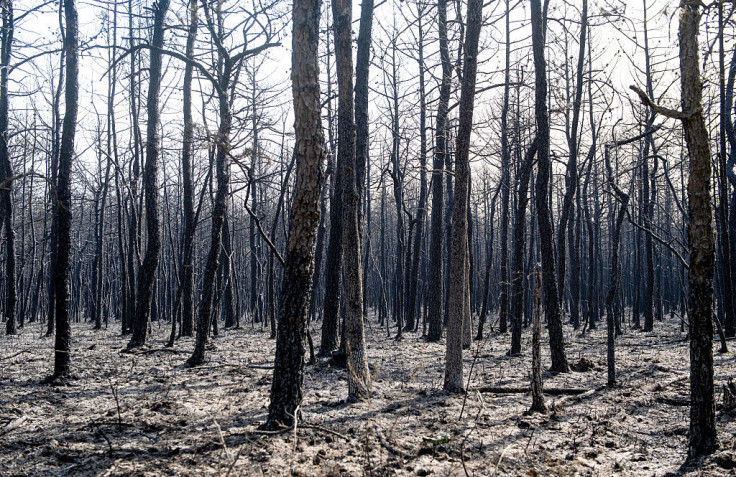Massive New Jersey Wildfire Devastates 8,500 Acres, Threatens Wildlife and Communities Amid Historic Drought

A raging wildfire, named the Jones Road Wildfire, has consumed over 8,500 acres in Ocean County, New Jersey, threatening the delicate Pinelands ecosystem, displacing wildlife, and forcing thousands of residents to evacuate. Igniting on April 22, 2025, in the Greenwood Forest Wildlife Management Area near Barnegat Township, the blaze has triggered a state of emergency, closed major highways, and left more than 25,000 homes without power. As of Wednesday morning, the fire remains only 10% contained, with dry conditions and gusty winds fueling its spread.
State of Emergency Declared as Fire Threatens Homes
New Jersey's Acting Governor Tahesha Way declared a state of emergency for Ocean County, citing the fire's rapid expansion and its threat to over 1,320 structures. "This fire has caused widespread disruption, including the evacuation of residents and the loss of power to thousands," Way said. The Garden State Parkway, a vital artery, was closed for 17 miles between Exits 63 and 80 as flames leaped across roads, including Route 9. Jersey Central Power & Light cut electricity to more than 25,000 customers to protect firefighters battling the blaze.
The fire's ferocity has left communities in chaos. "The smoke was so thick, and ashes covered everything," said Kelly Mendoza, an evacuee from Barnegat Township. Shelters, such as Manchester Township High School, have opened to house displaced residents, with no reported injuries or fatalities as of Wednesday.
Drought and Winds Fuel Unprecedented Fire Risk
The Jones Road Wildfire is fueled by a historic drought gripping New Jersey, with southern Ocean County classified as abnormally dry or in moderate drought by the U.S. Drought Monitor. Low humidity, temperatures in the 70s, and winds gusting up to 25 mph have created ideal conditions for the fire's rapid spread. The National Weather Service noted an elevated fire risk across the region, with forecasts predicting continued breezy conditions through Wednesday, though rain may arrive by Friday night, offering hope for relief.
New Jersey's 2025 wildfire season has been unusually severe, with 537 fires reported since early October—500 more than the same period last year. The state's burn bans and restrictions on outdoor fires remain in effect to curb further ignitions.
Ecological Toll on the Pinelands
The Greenwood Forest Wildlife Management Area, a cornerstone of the Pinelands, is home to endangered species like the Pine Barrens tree frog and threatened species such as the northern pine snake. While the Pinelands' pitch pines and scrub oaks are adapted to periodic fires, the intensity of the Jones Road Wildfire could disrupt habitats and force wildlife into residential areas. Similar fires in Passaic County last fall saw animals seeking refuge in backyards, prompting experts to urge residents to provide water and space for displaced creatures.
The long-term ecological impact depends on containment efforts. Uncontrolled fires can alter soil composition, reduce biodiversity, and hinder the recovery of fire-adapted ecosystems. The Pinelands' sandy soils and unique flora make it particularly vulnerable to prolonged blazes.
A Growing Wildfire Threat in the Northeast
The Jones Road Wildfire follows other destructive blazes in the region, including the Jennings Creek Wildfire, which burned over 7,000 acres across New York and New Jersey in November 2024 and claimed a volunteer firefighter's life. Experts attribute the surge in Northeast wildfires to climate change, which is driving warmer, drier conditions and extending fire seasons. "The combination of drought, wind, and warmth is a perfect storm for wildfires," said a National Weather Service spokesperson.
New Jersey's 21 counties remain at heightened risk, with the New Jersey Forest Fire Service working tirelessly to contain the blaze. Helicopters and ground crews are deployed, but the fire's size and unpredictable winds pose significant challenges.
Community Resilience and Recovery
As containment efforts continue, Ocean County residents are banding together. Emergency services are providing updates via social media, and some evacuation orders have been lifted, allowing residents to return home. Damage assessments are ongoing, with early reports suggesting no single-family homes have been destroyed, though the threat persists.
The psychological toll is evident. "It was terrifying to leave with just our documents and the clothes on our backs," said evacuee Ferrara. Recovery will require coordinated efforts to restore power, reopen roads, and support affected communities.
Looking Toward a Fire-Resilient Future
The Jones Road Wildfire underscores the need for proactive measures to address the growing wildfire threat in the Northeast. Experts call for enhanced forest management, public education on fire prevention, and climate adaptation strategies to mitigate drought and extreme weather. For now, the focus remains on containing the blaze and protecting lives, property, and the Pinelands' irreplaceable ecosystems.
Originally published on natureworldnews.com





















